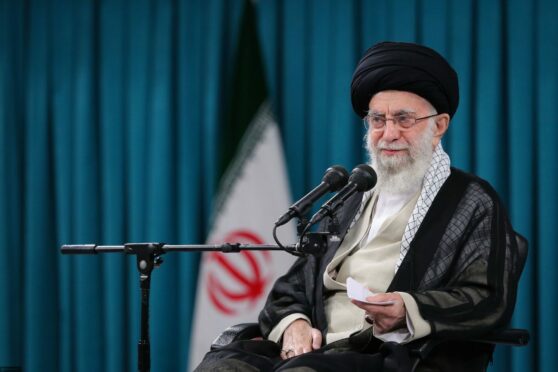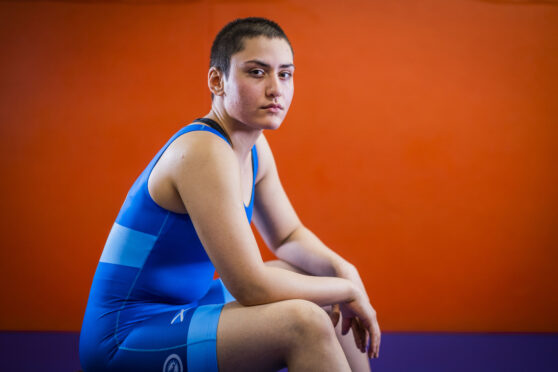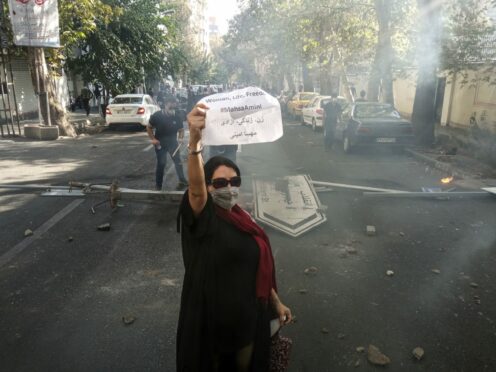
In an increasingly savage bid to crush the insurrection that has inflamed young Iranians, the Islamic Revolutionary Guards Corps (IRGC) and their thuggish Basij militia colleagues are using batons, tear gas and live ammunition to attack protesters.
The uprising, which has spread to 199 cities, has led to the deaths of more than 400 people including 32 children, and more than 20,000 arrests. Students in 45 major universities have joined the protests, as have secondary and primary school pupils, calling for the overthrow of the mullahs’ regime and its Supreme Leader Ayatollah Ali Khamenei. But as the insurrection enters its second month, the regime has unfurled a sinister new tactic. Police and IRGC officers have begun rounding up primary and secondary school pupils, incarcerating them in “psychological correctional facilities” for “re-education” and, according to education minister Yousef Nouri, “to prevent them becoming antisocial characters.”
As admirers of Vladimir Putin and his efforts to recreate the USSR, the mullahs’ regime is now borrowing from the Russian playbook. People who were deemed guilty of political opposition to the communist dictatorship and who participated in protests were regarded as mentally unstable under the old Soviet system and sent to psychiatric units for enforced “treatment”. The same shameful approach is now being applied to children in Iran. Boys and girls who have been identified as participants in protests are being arrested and sent for re-education to teach them that the mullahs’ repressive regime is beyond reproach. There have been reports of police demanding teachers hand over the names of girls who have protested against the strict dress codes for females, including the compulsory wearing of the hijab. Teachers who have refused have been arrested.
The nationwide uprising was triggered by the death of Mahsa Amini, a 22-year-old woman from Saqqez in Kurdistan Province. She had travelled to Tehran and was arrested on September 13 by the so-called morality police, accused of not properly covering her hair with her hijab. She died after being brutally beaten by the police in custody. The strict enforcement of hijab laws had been ordered by Ebrahim Raisi, the hard-line Iranian president, dubbed the “Butcher of Tehran” for his role in the massacre of 30,000 political prisoners in 1988.
Despite attempts by the regime to close down access to the internet, there has been a widespread distribution of videos showing teenagers and schoolgirls tearing off their hijabs, sometimes even cutting their hair and chanting “Women, Life, Freedom”, the rallying cry for millions of Iranian women who are angry at the repressive, misogynist laws imposed by the mullahs.
Nouri said: “We don’t have any students in prison, and if they are detained, they are sent to psychological centres where experts are doing their work so the students can return to the school environment after they have been reformed.”
This is a shameful and outrageous ploy by a regime that has already plumbed the depths of depravity. Nelson Mandela once said: “The true character of a society is revealed in how it treats its children.” There are already an estimated 33,000 destitute street children, sleeping rough in Iran’s towns and cities. They range in age from five to 18. They are starved and abused and forced to sleep on the same streets where they try to eke out a paltry living selling flowers and gum, washing windows and grabbing any chance of menial labour to survive.
Deprived of even basic welfare, they are forced to work for a pittance to avoid starvation. Many can be seen rummaging through bins and landfill dumps, looking for items to eat or sell.
The governments of civilized nations would deem feeding starving children as a priority. But the repressive mullahs’ regime regards them with derision, as some sort of contaminant to be cleansed from the streets. It is little wonder they have joined their sisters and brothers in the uprising. They feel they have nothing to lose.
Any country’s future relies on its children and the mullahs are destroying that future. There is no chance that any of Mandela’s wisdom will have penetrated the medieval minds of the mullahs. The only hope for the future is the rapid removal of this malevolent regime.
The West must not stand by and watch as young girls and boys are impoverished or forcibly detained in psychological correctional facilities. We must back the protesters in their bid to overthrow this tyrannical fascist autocracy.
Struan Stevenson, a former MEP, is coordinator of the Campaign for Iran Change and chair of the In Search Of Justice (ISJ) committee on the protection of political freedoms in Iran. Last week, the ISJ was blacklisted by the Tehran regime and members told they can no longer travel there

Enjoy the convenience of having The Sunday Post delivered as a digital ePaper straight to your smartphone, tablet or computer.
Subscribe for only £5.49 a month and enjoy all the benefits of the printed paper as a digital replica.
Subscribe

